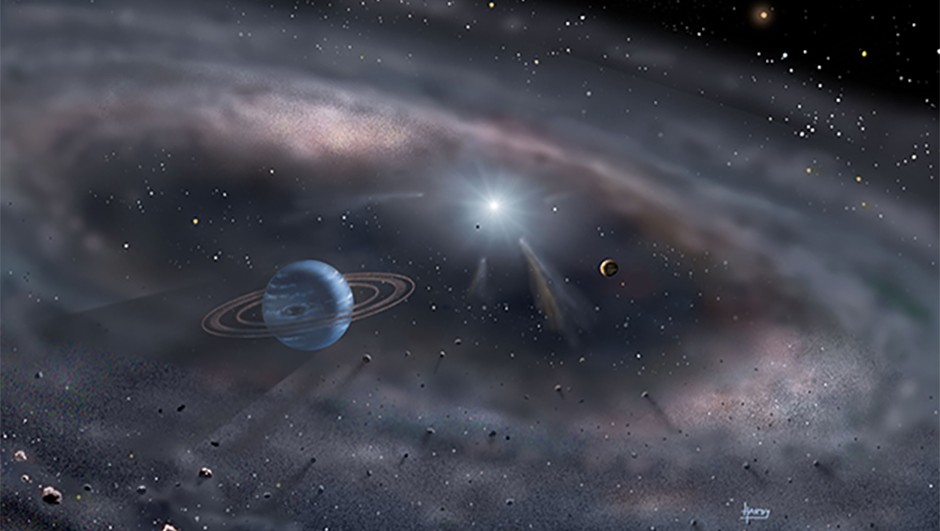Scientists found the planet MWC 758c, which formed arms in the protoplanetary disk of its star. It turns out to be twice as heavy as Jupiter, but practically invisible to most telescopes.

Spiral arms near the star
In a new study published in Nature Astronomy, researchers from the University of Arizona reported the discovery of the exoplanet MWC 758c, which created spiral arms at its star. They formed in the protoplanetary disk that surrounded this young luminary.
Spiral arms that are very similar to those of the Milky Way, but at the same time consist of gas and dust are not news to scientists. Scientists have observed them before. Approximately 30 percent of protoplanetary disks discovered by scientists have similar structures.
Researchers have long suspected that planets should be responsible for their formation, but none of them has yet been seen. This greatly surprised scientists, because according to all calculations, these celestial bodies, experiencing the last stages of their formation, should be extremely bright.
Planet MWC 758c
The new planet was discovered with the help of a Large Binocular Telescope Interferometer, or LBTI, which was built by the University of Arizona at the time. It consists of two mirror instruments with a diameter of 8.4 meters, which work as one in the mid-infrared range.
The star around which MWC 758c orbits is located at a distance of about 500 light-years from Earth. This young star, which is only a few million years old, still has a protoplanetary disk that will not dissipate for some time. And the spiral structure is present in it.
Interestingly, this system has already been studied by other telescopes, but no traces of the planet have been seen, although it is a gas giant twice as massive as Jupiter. The researchers see the reason for this in the fact that: the very peak of radiation that everyone was hoping for turned out to be strongly shifted to the red region of the spectrum.
And it is in it that LBTI is the most perfect tool of all created by people. It is even slightly superior to the James Webb Space Telescope, one of the instruments of which also works in the mid-infrared region of the spectrum.
Two scenarios of what is happening
As to why this happened, scientists have two main assumptions. According to the first, the planet is surrounded by a huge amount of dust, which shifts the radiation into the infrared region of the spectrum. In the second case, there is much less dust there, but the planet should be much colder.
Each of the options has its own interesting consequences. In the first case, right now there can be the formation of a powerful system of moons, similar to the one that Jupiter has. In the second, something unusual happens to the planet itself, as a result of which its temperature is lower than it should be according to all calculations.
In the future, the researchers plan to reserve time for research on the James Webb Telescope. With its help, they will try to search for planets in other systems with spiral arms. They should exist, they’re just too red for us to see them.
According to phys.org
Follow us on Twitter to get the most interesting space news in time
https://twitter.com/ust_magazine
